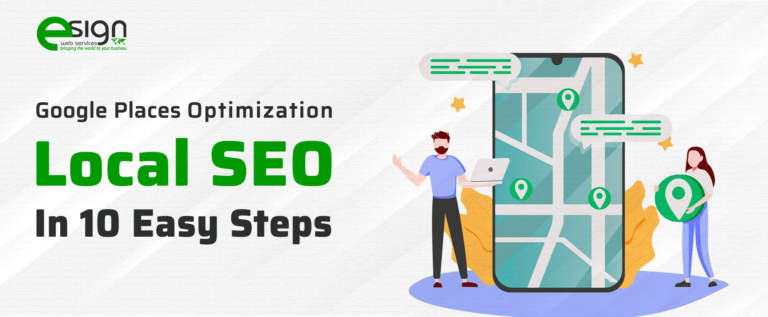Google Places Optimization – Local SEO in 10 Easy Steps

SEO-Search Engine Optimization has become a critical factor in search engine positioning during the past few years and this trend is expected to continue in 2020 and beyond! Whether your business serves a local or broad-based geographic market, your website must be optimized to increase the natural flow of traffic from search engines.
If your business does not appear on the first page of a Google search, then you are losing out on a huge number of potential clients
This has been proven by a *Forester Report when 8 of 10 retailers considered SEO to have more impact on gaining new customers than Search Engine Marketing or email.
So, get ready! In ten easy-peasy steps, you are going to be the Guru in SEO Marketing and achieve first-page search engine positioning for your local business!
1. Register your business in Google My Business, the biggest campaigner for refining local SEO in support of local businesses and retailers.
The page should contain accurate contact details of your business. Details on all online listings must be identical to your website and continuously updated, with no inconsistencies.
- Business name
- Business street address
- Operating hours
- Telephone and email address
- Website, etc.
The objective is to make it easy for searchers to find you and make contact and visit your business, normally within 24 hours after deciding to use your service or product. (your business needs to show on Google Maps so that searchers can physically see the geographical location).
2. Updating your Google My Business Page regularly
Update information to remain relevant, add pictures and customer reviews, etc. Remember, you are engaging on-line with your customers (and new searchers) which is as important as face-to-face engagement.
3. Your Homepage
- Title Tag (about 50-60 characters in length)
- Meta Description (Ideally between 100 and 150)
- characters in length and contains keywords.
- Visible Headline, should be short and easily read.
- Page Copy, ideally between 500 and 1000 words long in length, well written and edited.
- Service Pages – if your business provides more than one service, each should be listed on a separate page.
4. Link your website with your social media profiles
Social media is an excellent resource to drive traffic to your website. This is why updating your content regularly is important as it increases your active presence among your business followers.
5. Link to the top business online directories aligned to your business category
Eg; To derive optimal exposure, add your business to various online Directories such as HomeAdvisor, Yelp, Angie’s List, Foursquare, Yellow pages, etc. The same information must appear on all relevant citation sites.
Also engage with partners, suppliers, other service providers to either obtain or swap links with them. Also, tools like Semrush and Ahrefs.com are very useful for checking where your competitors obtain their links.
6. Ensure your website is responsive to mobile devices
Your website should look good on different mobile devices with varying screen sizes, as most people use their phones for quick searches. This is imperative for a local business search. Use one of the free tools to check your website’s responsiveness, such as Google’s Mobility Tester.
7. Super fast load time
There is nothing more frustrating than a ‘time-wasting’ site. If your website takes too long to load, you may lose valuable customers as people will leave before viewing your business services. This also influences your ranking on Google.
8. Request reviews regularly
Online reviews can make or break a business. This also gives Google a strong signal that you have a legitimate business and for the same reason, new customers will feel more comfortable engaging with your business. Obviously ‘Google My Business’ reviews are valuable for higher rankings but your customers should also be able to leave a review.
9. How to create a direct link for Customer Reviews
a) Do an online search for your business name until you see ‘Google My Business Profile’ in the top-right of the search- results.
b) Next to your business name the ‘Write a Review’ button will appear (just below your profile preview). That’s the link you want to share, so click on it and copy it into your browser. It will probably be a lengthy link that can be hyperlinked in an email. We strongly recommend that you send that link to your customers and you could simply say, ‘click here to leave us your valued review’
10. Analytical Tools
Track local SEO rankings
Excellent tools for tracking Local SEO rankings are Rank Ranger, AgencyAnalytics, and BrightLocal but you may try others as well.
Tracking Traffic
Google Analytics is great for tracking traffic to your business website. In this way, you can monitor consumer behavior from month to month and ‘season to season’, if you have a seasonal business.
Tracking Leads generated on your website
Following up on every lead that’s been generated on your website is critical for a business to grow. Google Analytics Goals could work efficiently at tracking forms completed and submitted on the website. Remember, customers have taken time to engage on your website. This is what SEO is all about!


